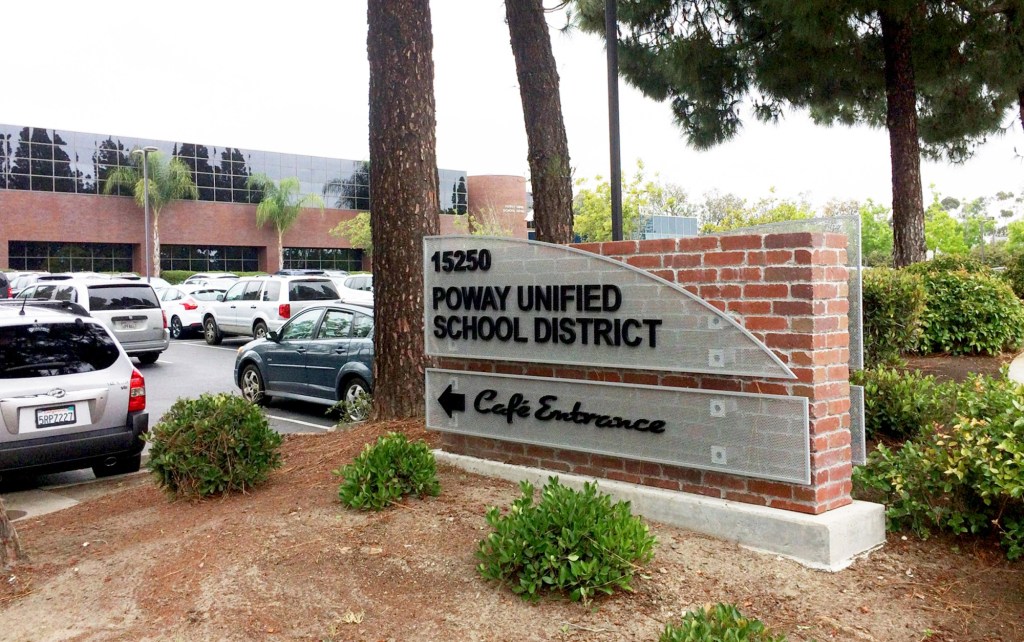Poway Unified School District trustees voted unanimously Oct. 9 to hire two consultants to start researching the potential for a bond measure to help pay for $1.8B in facilities improvements.
Trustees hired consultants TeamCivX and True North Research to do a study of community support for placing a bond on the November 2026 ballot for voters in the school district.
Board President Ginger Couvrette said the consultants are well known in the industry and have a reputation of performing quality work.
“They’re state recognized folks who have had a lot of success in similar districts that hadn’t passed bonds in a while,” Couvrette said. “They asked us good questions to get the right information.”
Some of the projects the consultants are expected to work on include researching a recommended amount for the bond measure, and asking voters questions to gauge support for the bond “before we dive into the whole campaign,” she said.
The vote followed a Sept. 29 special board meeting in which trustees discussed the districtwide Facilities Master Plan, which includes updates on progress being made on facility upgrades, ongoing maintenance costs and a revised cost estimate for the remaining projects.
The revised cost estimate for facilities projects at Poway Unified now totals $1.78 billion, according to a staff report. Less than $100 million is available for facilities projects currently, the report states.
Although the district is eligible to apply for state funding in the amount of $119 million, the process to receive state funding can take years, officials said.
Some of the larger facilities needs include replacing the heating, ventilation and air conditioning (HVAC) system at Rancho Bernardo High School and Bernardo Heights Middle School at an estimated cost of roughly $28 million. Other costly facilities improvements include renovating four high school theaters in addition to replacing and renovating roofs, floors, playgrounds, paint and stucco throughout the district.
Matching funds are available from the state for certain facilities projects, but only when the school district has funds to match their contributions, Couvrette said. The school board recently approved an application for a grant for a new Career Technical Education facility to be built at the Poway High School campus, she said.
“We’re looking to get $1.5 million for a CTE facility at Poway High but we have to match it 50-50,” Couvrette said. “If we don’t have the money, then we’re out of luck.”
TeamCivX and its contractor True North Research are expected to conduct a feasibility study for the bond, share survey results, and consult on potential ballot measure development, according to a staff report.
The consultant would be paid $8,500 a month to identify facilities projects to include in the bond measure language and to determine the best “messages” to send to voters when marketing the concepts for a bond.
True North Research would be paid a one-time cost of $31,850 for the initial polling of voters to evaluate their opinions about the bond.
Eric Dill, associate superintendent of Business Support Services, said the consultants would likely focus on projects that “resonate with the community.”
Poway Unified’s most recent general obligation bond measure was approved in 2008, he said. Demonstrating the progress made on those facilities projects and other district improvements could be one strategy for presenting a new bond proposal, he said.
Trustee Tim Dougherty said he would like to measure the “sentiments of the community” regarding paying for facilities upgrades.
Dougherty said the previous school board decided not to pursue a bond after unfavorable polling showed voters would not be in favor of a facilities bond in the 2024 election.
“That was before my time,” Dougherty said. “This time we’ll do a similar poll and ask similar questions, and now I’m anxious to see the results of that and see if the sentiments have changed since the last election. We as a board, and the new leadership at the district, have done a good job of tightening down expenses and trying to get our deficit under control. We’re still on a plan to break even in two years.”

